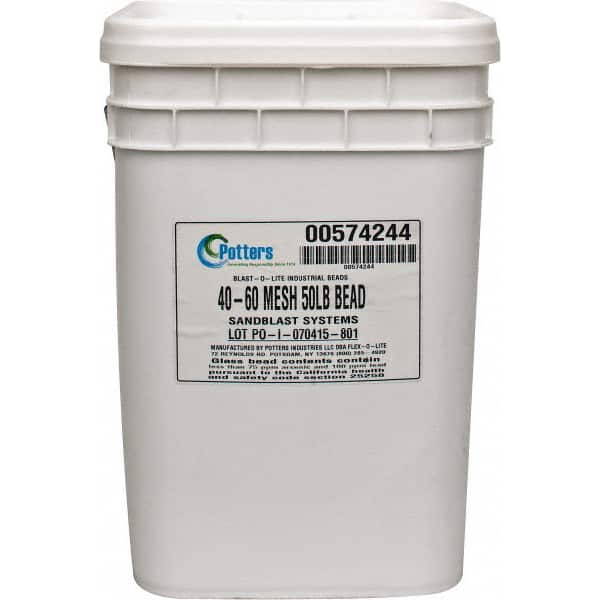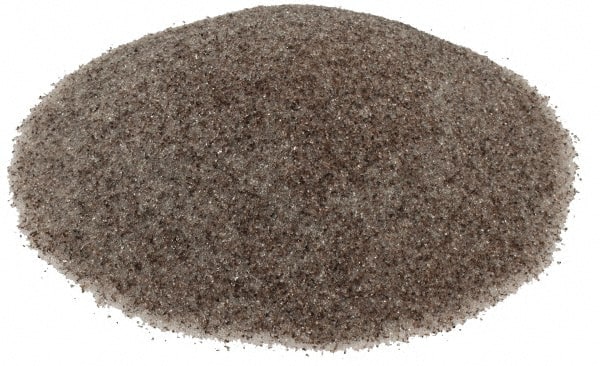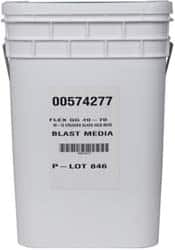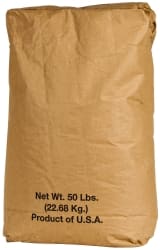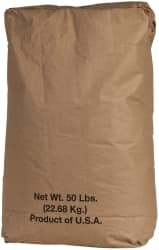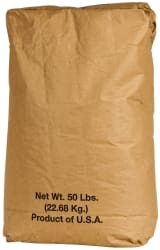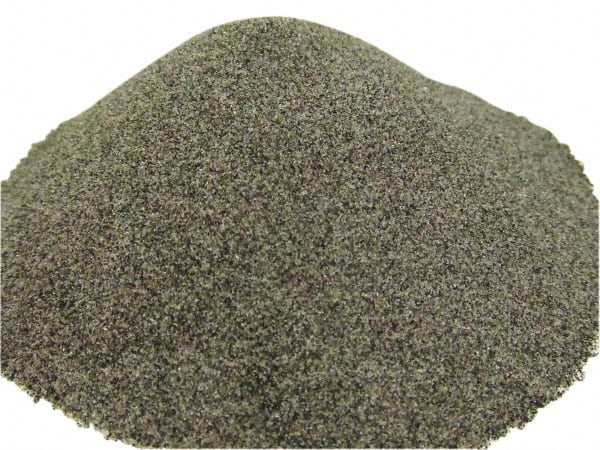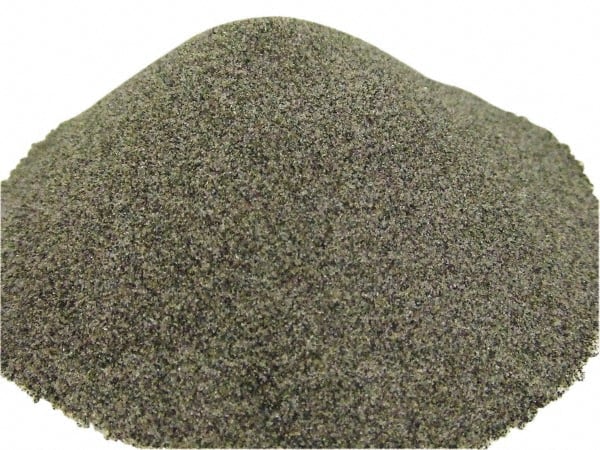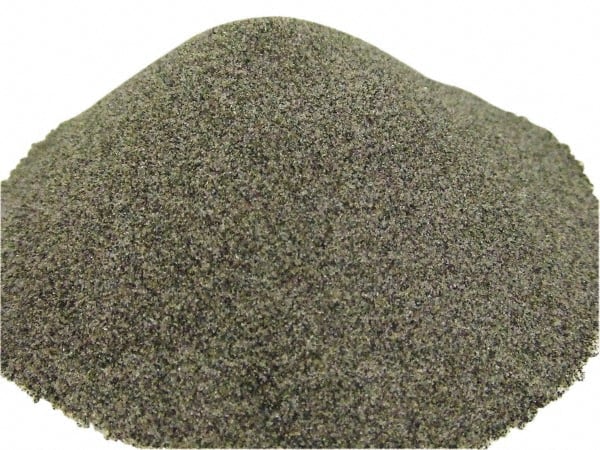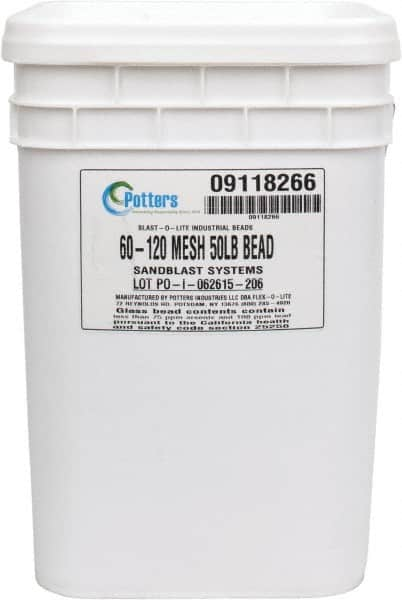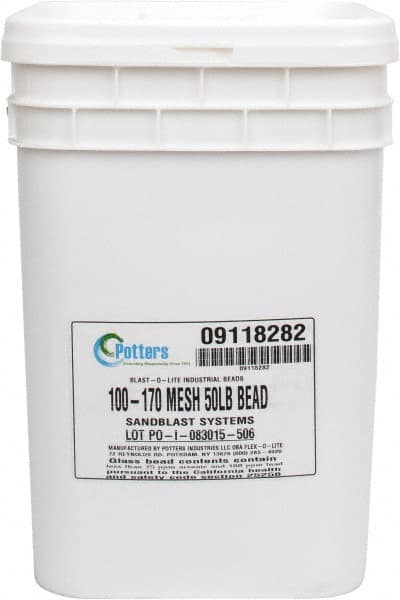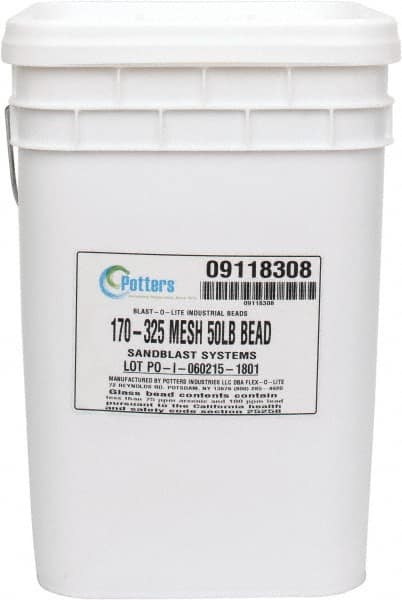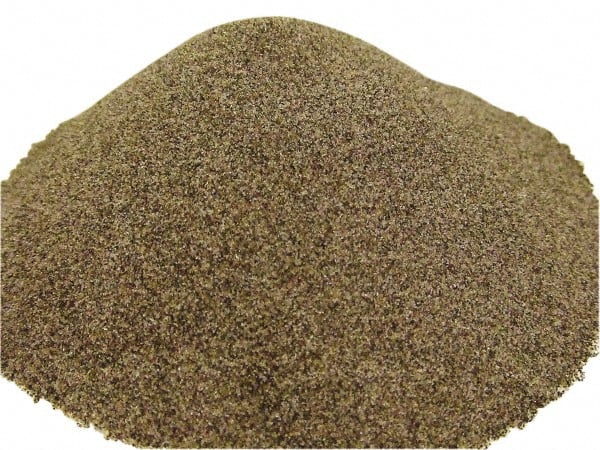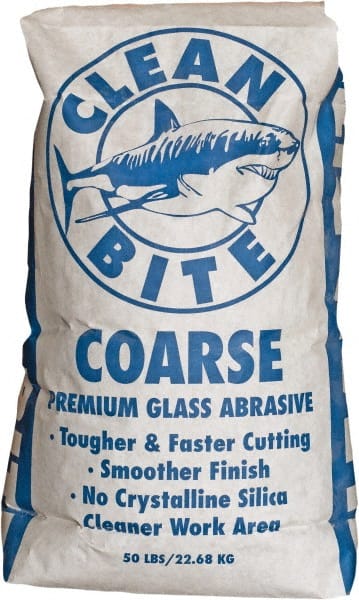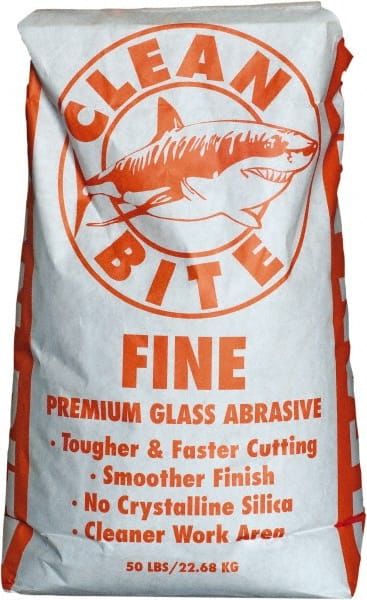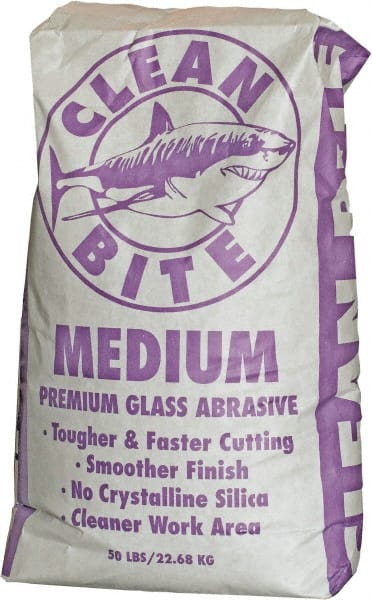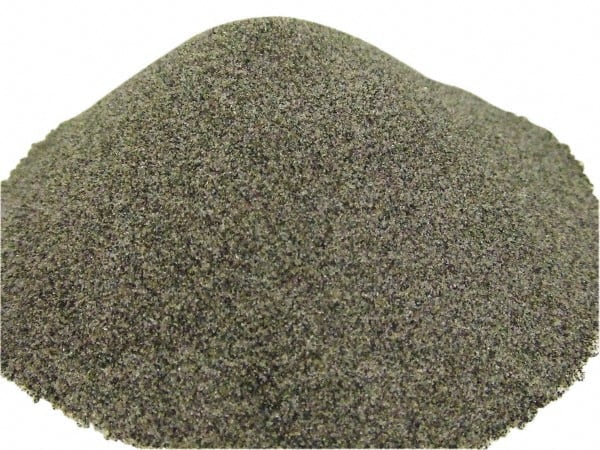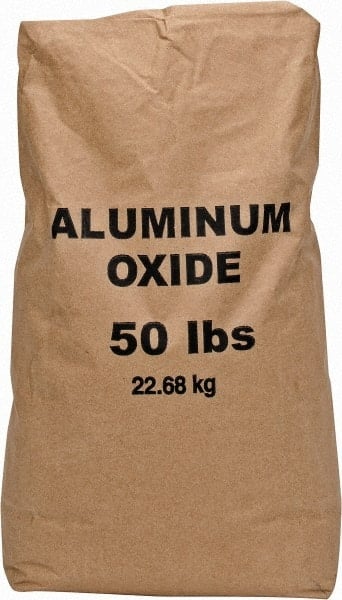Abrasive Blasting Media: A Comprehensive Guide

Introduction
Abrasive blasting, also known as sandblasting, is an essential process used in various industries to clean or shape surfaces, using different media types. Understanding the right kind of abrasive blasting media to use can determine the success and efficiency of the operation.
A Guide to Abrasive Blasting Media Products
Blasting media is the backbone of the abrasive blasting industry. These materials propel against surfaces at high velocities to achieve a variety of finishes, from aggressive cleaning to delicate polishing. The choice of blasting media significantly influences the results, and therefore, understanding their characteristics and applications is crucial. Dive into our guide on some of the most widely used abrasive blasting media products and their nuances.
1. Steel Shot & Grit
Description:
Steel Shot and Grit are metallic abrasives formed through a molten steel process. They are spherical (shot) and angular (grit) in shape, which leads to different surface finishes.
Characteristics:
- Hardness: High, making them ideal for aggressive operations.
- Recyclability: High, allowing for multiple usage cycles.
Applications:
Apart from cleaning heavy-duty steel surfaces, they are commonly used in surface preparation for painting, eliminating surface defects, and preparing for galvanizing.
2. Glass Beads
Description:
Glass Beads are spherical abrasives manufactured from lead-free, soda lime-type glass. They provide a smooth, satin finish without altering the dimensions of the blasted part.
Characteristics:
- Hardness: Moderate.
- Elasticity: Low, causing them to shatter upon impact.
Applications:
Apart from light deburring and polishing, they are great for peening, cleaning, finishing, and removing light foreign matter without causing dimensional change.
3. Aluminum Oxide
Description:
Aluminum Oxide is a durable, sharp, reusable and recyclable blasting abrasive. It comes in various colors and purities, with brown aluminum oxide being the most common.
Characteristics:
- Hardness: Very high.
- Longevity: Durable and long-lasting.
Applications:
Beyond etching and profiling, it's used for blast cleaning turbine blades, non-skid applications, and engraving.
4. Silicon Carbide
Description:
Silicon Carbide is a synthetic abrasive recognized for its hardness, making it ideal for aggressive operations.
Characteristics:
- Hardness: Extremely high, just below diamond.
- Brittleness: High, leading to its fracturing in use.
Applications:
Primarily used for stone engraving, grinding of non-ferrous metals, and finishing of hard materials.
5. Walnut Shells & Corn Cobs
Description:
These are natural, soft abrasives and are biodegradable, making them environmentally friendly options.
Characteristics:
- Hardness: Low.
- Safety: Non-toxic and causes minimal wear.
Applications:
They are ideal for deflashing, cleaning, deburring, and polishing delicate parts, molds, or castings.
6. Plastic Abrasives
Description:
Plastic Abrasives are synthetic, sharp media designed to avoid damaging sensitive surfaces.
Characteristics:
- Hardness: Moderate.
- Elasticity: High, preventing surface damage.
Applications:
Widely used in the automotive and aerospace sectors, specifically for cleaning, stripping paints, and deburring.
7. Copper Slag
Description:
Copper Slag is a by-product of the copper extraction process, often used due to its aggressive abrasive qualities.
Characteristics:
- Hardness: High.
- Shape: Angular.
Applications:
Beyond marine and bridge cleaning, it's suitable for cleaning large shipyards, tanks, and oil rigs.
8. Coal Slag
Description:
Coal Slag, a glass matrix alumina-silicate by-product from coal-fired plants, serves as an abrasive blasting medium.
Characteristics:
- Hardness: Moderate to high.
- Texture: Angular.
Applications:
Apart from rust and paint removal, it's also used for scale removal and surface preparation prior to painting.
9. Staurolite
Description:
Staurolite is a naturally occurring, reddish-brown mineral abrasive, mainly found in metamorphic rocks.
Characteristics:
- Hardness: Moderate.
- Density: Relatively high.
Applications:
Apart from blasting shipyards and steel structures, it's often used for cleaning in the oil industry due to its low free silica content.
10. Garnet
Description:
Garnet is a naturally occurring group of minerals. In the context of abrasive blasting, it's known for its hardness and sharpness.
Characteristics:
- Hardness: High.
- Eco-Friendliness: Non-toxic and causes less dust.
Applications:
Beyond wet blasting, garnet is perfect for waterjet cutting, tank cleaning, and stone polishing.
This guide provides a foundation for understanding the diverse range of abrasive blasting media products available. Making the right choice depends on your specific requirements and understanding the attributes of each media type.
Top 10 Features to Look for in Abrasive Blasting Media
In the intricate world of abrasive blasting, choosing the right media is crucial. It's not just about "scrubbing" a surface; it's about understanding the nuances that each media type brings to the table. From the robustness of the abrasive to its environmental footprint, multiple factors play a role in determining the success and efficiency of a blasting project. The effectiveness of a blasting operation doesn't solely rely on the equipment used or the expertise of the operator, but also on the compatibility and appropriateness of the chosen media for the task at hand.
To aid in your selection, we've highlighted the top 10 features to consider when shopping for abrasive blasting media. By understanding each feature's importance and its direct implications on various applications, you can make an informed decision tailored to your specific needs. Whether you're a seasoned professional or a newcomer to the blasting arena, this guide aims to provide clarity and deepen your appreciation for the subtle yet vital differences among various abrasive media. Let's dive in and explore these pivotal attributes.
1. Hardness
- Description: Hardness indicates the resistance of an abrasive material to being penetrated, signifying how aggressive the abrasive will be in action.
- Measurement: Rated on the Mohs Scale, where talc is 1 (softest) and diamond is 10 (hardest). Higher values indicate stronger, more aggressive abrasives, while lower values are gentler.
- Importance: Hardness directly impacts the media's ability to clean, etch, and profile surfaces effectively.
- Applications: Hard abrasives like aluminum oxide are ideal for aggressive operations such as rust removal, while soft abrasives like walnut shells are better suited for delicate surfaces and polishing.
2. Size & Shape
- Description: Refers to the physical dimensions and form of the abrasive particles.
- Measurement: Quantified by mesh number or grit size. A higher mesh number means smaller particles. Shape is categorized into angular, sub-angular, rounded, etc.
- Importance: Determines the finish quality and rate of cleaning. Particle size and shape influence the abrasive's efficiency and finish.
- Applications: Coarser abrasives are perfect for profiling metal surfaces, while finer sizes are used for polishing and finishing.
3. Recyclability
- Description: Assesses the abrasive's capability to be used multiple times before losing its effectiveness.
- Measurement: Counted by the number of usable cycles before degradation.
- Importance: Reflects the abrasive's longevity and sustainability. Recyclable media is cost-efficient and environmentally responsible.
- Applications: Particularly essential in indoor blasting chambers where media is often collected and reused.
4. Dust Production
- Description: Relates to the amount of fine particles produced during blasting, affecting visibility and cleanup.
- Measurement: Quantified by dust index or visibility factor. A lower dust index suggests better visibility and less post-blast cleanup.
- Importance: Vital for operator safety, environmental concerns, and ensuring quality results.
- Applications: Crucial in situations demanding minimal dust due to health, safety, or quality considerations.
5. Speed
- Description: Pertains to the efficiency of the abrasive in material removal.
- Measurement: Typically measured as the removal rate per hour.
- Importance: Directly impacts project timelines and efficiency. Faster removal rates can increase productivity.
- Applications: Ideal for tasks necessitating swift paint, rust, or coating removal.
6. Consumption Rate
- Description: Indicates the volume of abrasive media expended during blasting operations.
- Measurement: Typically tracked in pounds used per hour.
- Importance: Consumption rate affects operational costs and the need for media replenishment.
- Applications: Vital for extended projects where consistent media supply is paramount.
7. Cost-effectiveness
- Description: Evaluates the balance between the abrasive's performance and its cost.
- Measurement: Commonly gauged as cost per square foot or per pound.
- Importance: Essential for budgeting and ensuring optimal value for money.
- Applications: Key consideration for large-scale projects or frequent maintenance operations.
8. Compatibility
- Description: Assesses whether the abrasive will cause harm or be detrimental to the blasted surface.
- Measurement: Determined by the abrasive's material type and its reaction with the substrate.
- Importance: Avoiding unwanted damage or alteration to surfaces is pivotal.
- Applications: Especially critical in the aerospace and automotive sectors where surface integrity of delicate parts is paramount.
9. Environmental Impact
- Description: Measures the environmental footprint of the abrasive, considering its source, production process, and disposal.
- Measurement: Evaluated based on factors like biodegradability and toxicity.
- Importance: Growing emphasis on sustainability makes eco-friendliness a significant consideration.
- Applications: Especially relevant in sensitive settings like food processing plants or areas with strict environmental regulations.
10. Versatility
- Description: Determines the range of tasks and materials an abrasive is suitable for.
- Measurement: Assessed by the spectrum of suitable tasks or materials it can handle without degradation.
- Importance: Versatile abrasives offer flexibility, reducing the need for multiple products.
- Applications: Particularly valuable for general-purpose blasting or for contractors handling varied projects.
Top 25 Use Cases for Abrasive Blasting Media
Abrasive blasting, also known as sandblasting, is a process where various media are blasted at high speeds to achieve various results on surfaces. Different media can produce different finishes, remove impurities, or prepare a surface for further treatment. The selection of blasting media can have significant implications on the efficiency and outcome of the blasting process. Let's explore the top 25 use cases for abrasive blasting media, diving deeper into the meaning behind each use, the top recommended media, and the key measurement values to consider.
1. Rust Removal
What does it mean?
Rust removal entails eliminating corrosion and oxidization from metal surfaces to enhance their lifespan and appearance.
Top 2 Abrasive Blasting Media:
- Steel Grit: Known for its hardness and angular structure, it's aggressive and effective against rust.
- Aluminum Oxide: Due to its durability and sharpness, it offers a comprehensive rust removal capability.
Key Measurement and Values:
- Hardness: Look for high hardness values to ensure efficient rust removal.
- Size: Coarser grains for heavily rusted surfaces.
2. Paint Stripping
What does it mean?
Paint stripping is the process of removing old paint layers from various surfaces, preparing them for repainting or restoring their original appearance.
Top 2 Abrasive Blasting Media:
- Copper Slag: Efficiently strips old paint without harming the base material.
- Plastic Abrasives: Ideal for delicate surfaces where underlying material must remain unscathed.
Key Measurement and Values:
- Shape: Angular abrasives for faster stripping.
- Density: Medium density for an effective stripping without deep profiling.
3. Concrete Cleaning
What does it mean?
Concrete cleaning involves removing dirt, stains, and superficial layers from concrete surfaces without eroding the concrete.
Top 2 Abrasive Blasting Media:
- Glass Beads: Cleans without eroding the concrete, imparting a clean and smooth finish.
- Walnut Shells: Gentle enough to prevent surface damage yet efficient in removing stains.
Key Measurement and Values:
- Hardness: Medium hardness for effective cleaning without erosion.
- Size: Finer grains for a smoother finish on concrete.
4. Graffiti Removal
What does it mean?
Graffiti removal is about restoring urban surfaces by eliminating unwanted paint markings without damaging the original surface.
Top 2 Abrasive Blasting Media:
- Walnut Shells: Gentle yet effective for urban surfaces, particularly on delicate brick or stone.
- Plastic Abrasives: Suitable for surfaces where gentleness is needed to maintain original aesthetics.
Key Measurement and Values:
- Elasticity: High elasticity to avoid damage.
- Size: Variable sizes, depending on the thickness of graffiti layers.
5. Deburring Metal
What does it mean?
Deburring is the process of smoothing the rough edges or protrusions of metal parts, often a result of machining processes.
Top 2 Abrasive Blasting Media:
- Steel Shot: As a round media, it efficiently smoothens and polishes metal edges.
- Glass Beads: Offers a clean finish while ensuring the metal retains its shape.
Key Measurement and Values:
- Shape: Spherical abrasives for a smooth finish.
- Hardness: High hardness to effectively smooth metal surfaces.
6. Industrial Equipment Cleaning
What does it mean?
This pertains to the removal of grime, grease, and other contaminants from industrial machinery to ensure optimal performance and extend equipment life.
Top 2 Abrasive Blasting Media:
- Steel Grit: Efficiently removes stubborn contaminants from metal equipment.
- Glass Beads: Offers a polished finish, restoring machinery to a near-new appearance.
Key Measurement and Values:
- Hardness: Medium to high hardness values to remove industrial grime.
- Size: Coarse grains for tougher grime; finer grains for polishing.
7. Mold Remediation
What does it mean?
Mold remediation involves removing mold from surfaces, especially in areas prone to dampness like basements and bathrooms.
Top 2 Abrasive Blasting Media:
- Sodium Bicarbonate (Baking Soda): Mildly abrasive and effective for mold removal without causing surface damage.
- Walnut Shells: Gentle and effective for wooden surfaces, ensuring no substrate damage.
Key Measurement and Values:
- Elasticity: High elasticity to prevent surface damage.
- pH: Alkaline substances like baking soda also inhibit mold growth.
8. Preparing for Powder Coating
What does it mean?
This is the process of cleaning and texturing surfaces before applying a powder coat to ensure better adhesion.
Top 2 Abrasive Blasting Media:
- Aluminum Oxide: Effective for etching and ensuring a clean surface for better adhesion.
- Steel Grit: Provides a uniform rough texture, optimal for powder coating adherence.
Key Measurement and Values:
- Shape: Angular abrasives to provide a textured surface.
- Size: Coarser grains for creating the necessary roughness.
9. Automotive Restoration
What does it mean?
This involves cleaning, stripping, and preparing car parts during the restoration process.
Top 2 Abrasive Blasting Media:
- Plastic Abrasives: Perfect for removing paints and primers without warping delicate metal.
- Glass Beads: For achieving a smooth, polished look on metal automotive parts.
Key Measurement and Values:
- Hardness: Medium hardness to strip without damaging.
- Shape: Spherical for polishing; angular for paint removal.
10. Monument and Statue Cleaning
What does it mean?
It refers to the gentle removal of pollutants, bird droppings, and natural wear from monuments and statues to restore their original appearance.
Top 2 Abrasive Blasting Media:
- Walnut Shells: Their gentle nature makes them ideal for delicate surfaces like marble and limestone.
- Sodium Bicarbonate: Effective in lifting dirt and grime without causing any etching.
Key Measurement and Values:
- Hardness: Low to ensure no damage.
- Size: Fine grains for a smooth finish.
11. Marine Maintenance
What does it mean?
This encompasses cleaning barnacles, rust, and other marine deposits from ships and underwater structures.
Top 2 Abrasive Blasting Media:
- Copper Slag: Efficient in tackling heavy marine growth and rust from ship hulls.
- Garnet: Effective for cleaning without overly damaging the base material.
Key Measurement and Values:
- Hardness: High to tackle marine growth.
- Density: High to work efficiently underwater.
12. Pipeline Cleaning
What does it mean?
Pipeline cleaning involves the removal of deposits, rust, and other contaminants from inside and outside of pipes, ensuring optimal flow and reducing wear.
Top 2 Abrasive Blasting Media:
- Steel Grit: Efficiently removes internal deposits and external rust.
- Garnet: Provides a thorough cleaning without excessive metal removal.
Key Measurement and Values:
- Hardness: High for rust and scale removal.
- Shape: Angular for aggressive cleaning.
13. Aircraft Maintenance
What does it mean?
This pertains to the cleaning, paint removal, and corrosion control of aircraft parts to ensure flight safety and efficiency.
Top 2 Abrasive Blasting Media:
- Plastic Abrasives: Safely removes paints without causing damage to delicate aircraft surfaces.
- Aluminum Oxide: Efficient for detailed etching and corrosion control.
Key Measurement and Values:
- Hardness: Medium to prevent substrate damage.
- Size: Finer grains for detailed work.
14. Glass Etching
What does it mean?
Glass etching involves creating designs on glass surfaces by selectively roughening areas, producing artistic patterns.
Top 2 Abrasive Blasting Media:
- Aluminum Oxide: Provides fine detailing on glass surfaces.
- Silicon Carbide: Ensures detailed and precise etching due to its hardness.
Key Measurement and Values:
- Hardness: High for precise detailing.
- Size: Ultra-fine grains for intricate designs.
15. Wood Refinishing
What does it mean?
This involves the removal of old paint, stains, or imperfections from wooden surfaces.
Top 2 Abrasive Blasting Media:
- Walnut Shells: Gentle on wood and efficient in stripping old paint.
- Corn Cobs: Biodegradable and ideal for polishing wooden surfaces.
Key Measurement and Values:
- Hardness: Low to medium to ensure the wood isn't damaged.
- Size: Medium grains for effective stripping and polishing.
16. Bridge Maintenance
What does it mean?
Maintenance processes to remove rust, paint, and pollutants from bridge surfaces to enhance lifespan and appearance.
Top 2 Abrasive Blasting Media:
- Steel Grit: Ideal for heavy rust removal.
- Copper Slag: Efficient for large-scale paint stripping.
Key Measurement and Values:
- Hardness: High to handle large, corroded structures.
- Density: High for faster stripping.
17. Electronic Component Cleaning
What does it mean?
This refers to cleaning electronic components to remove residues, ensuring optimal functionality.
Top 2 Abrasive Blasting Media:
- Glass Beads: Gentle cleaning without causing electronic damage.
- Plastic Abrasives: Safe for delicate components, ensuring no static buildup.
Key Measurement and Values:
- Hardness: Low to avoid damaging sensitive parts.
- Conductivity: Low to prevent static buildup.
18. Tank Cleaning
What does it mean?
Removal of sediment, rust, and other contaminants from storage tanks to ensure content purity.
Top 2 Abrasive Blasting Media:
- Aluminum Oxide: Efficient for internal rust removal.
- Coal Slag: Effective in stripping internal tank coatings.
Key Measurement and Values:
- Shape: Angular for aggressive cleaning.
- Size: Coarse grains for faster cleaning.
19. Stone and Brick Cleaning
What does it mean?
Restoring old and stained brick and stone surfaces to their original appearance.
Top 2 Abrasive Blasting Media:
- Sodium Bicarbonate: Gentle cleaning, especially on historic structures.
- Glass Beads: Effective for providing a polished look.
Key Measurement and Values:
- Hardness: Medium for effective cleaning without damage.
- Size: Medium to fine grains for smoother finishes.
20. Fire Restoration
What does it mean?
Cleaning structures and items affected by fire, removing soot, and charring.
Top 2 Abrasive Blasting Media:
- Sodium Bicarbonate: Neutralizes fire odors and removes soot effectively.
- Walnut Shells: Gentle cleaning, especially on charred wood.
Key Measurement and Values:
- pH: Alkaline substances like baking soda help in neutralizing odors.
- Size: Medium grains for efficient soot removal.
21. Swimming Pool Cleaning
What does it mean?
Removing algae, stains, and calcium deposits from pool surfaces.
Top 2 Abrasive Blasting Media:
- Glass Beads: Gentle on tiles and effective in stain removal.
- Staurolite: Removes tough calcium deposits.
Key Measurement and Values:
- Hardness: Medium to ensure the tiles aren't damaged.
- Size: Fine grains for delicate surfaces.
22. Railway Maintenance
What does it mean?
Cleaning and maintaining train exteriors, interiors, and tracks.
Top 2 Abrasive Blasting Media:
- Steel Shot: Ideal for heavy rust removal from tracks.
- Aluminum Oxide: Efficient for detailed cleaning on train exteriors.
Key Measurement and Values:
- Hardness: High for heavy-duty tasks.
- Size: Coarse grains for aggressive cleaning.
23. Factory Floor Cleaning
What does it mean?
Removing stubborn stains, residues, and contaminants from factory floors.
Top 2 Abrasive Blasting Media:
- Copper Slag: Efficient in tackling large areas.
- Steel Grit: Ideal for removing tough, ground-in dirt.
Key Measurement and Values:
- Density: High for faster coverage.
- Size: Coarse for stubborn stains.
24. Food Equipment Cleaning
What does it mean?
Deep cleaning food processing equipment to ensure health standards.
Top 2 Abrasive Blasting Media:
- Walnut Shells: Efficient and food-safe.
- Sodium Bicarbonate: Ideal for gentle cleaning and odor neutralization.
Key Measurement and Values:
- Hardness: Low to medium to prevent equipment damage.
- pH: Neutral to slightly alkaline for effective cleaning.
25. Heat Exchanger Cleaning
What does it mean?
Removing fouling from heat exchangers to ensure efficient heat transfer.
Top 2 Abrasive Blasting Media:
- Silicon Carbide: Hard enough to handle mineral deposits.
- Aluminum Oxide: Effective for removing organic fouling.
Key Measurement and Values:
- Hardness: High to tackle tough deposits.
- Size: Medium to coarse grains for effective cleaning.
Why Choose GoVets for Abrasive Blasting Media?
When it comes to abrasive blasting media, it's paramount to select a provider that not only offers a variety of quality products but also understands the unique needs of your industry. GoVets is the ultimate solution. As a trusted partner for businesses across a vast array of sectors, GoVets assures customers of top-notch products tailored for their specific requirements.
Whether you are a government entity, a large enterprise, or an SME, GoVets understands your needs and delivers accordingly. With special pricing for government buyers, an extensive product range for commercial businesses, and an enterprise-level experience for SMEs, GoVets ensures that every customer is catered to meticulously.
Further sweetening the deal is the platform's 100% USA-based customer support, allowing you to seamlessly address any queries or issues. This commitment to customer satisfaction, coupled with the ability to complete projects on time, makes GoVets the perfect destination for all your abrasive blasting media requirements.
Remember, by choosing GoVets, you're not just opting for a supplier; you're selecting a partner that values your business needs and provides unparalleled support. So, make the right choice today – Shop, Save, and Support Veterans with GoVets!
Product Recommendations:
Shop Abrasive Blasting Media on GoVets
Each of these categories underscores GoVets' commitment to supporting our customers with diverse, comprehensive offerings.


